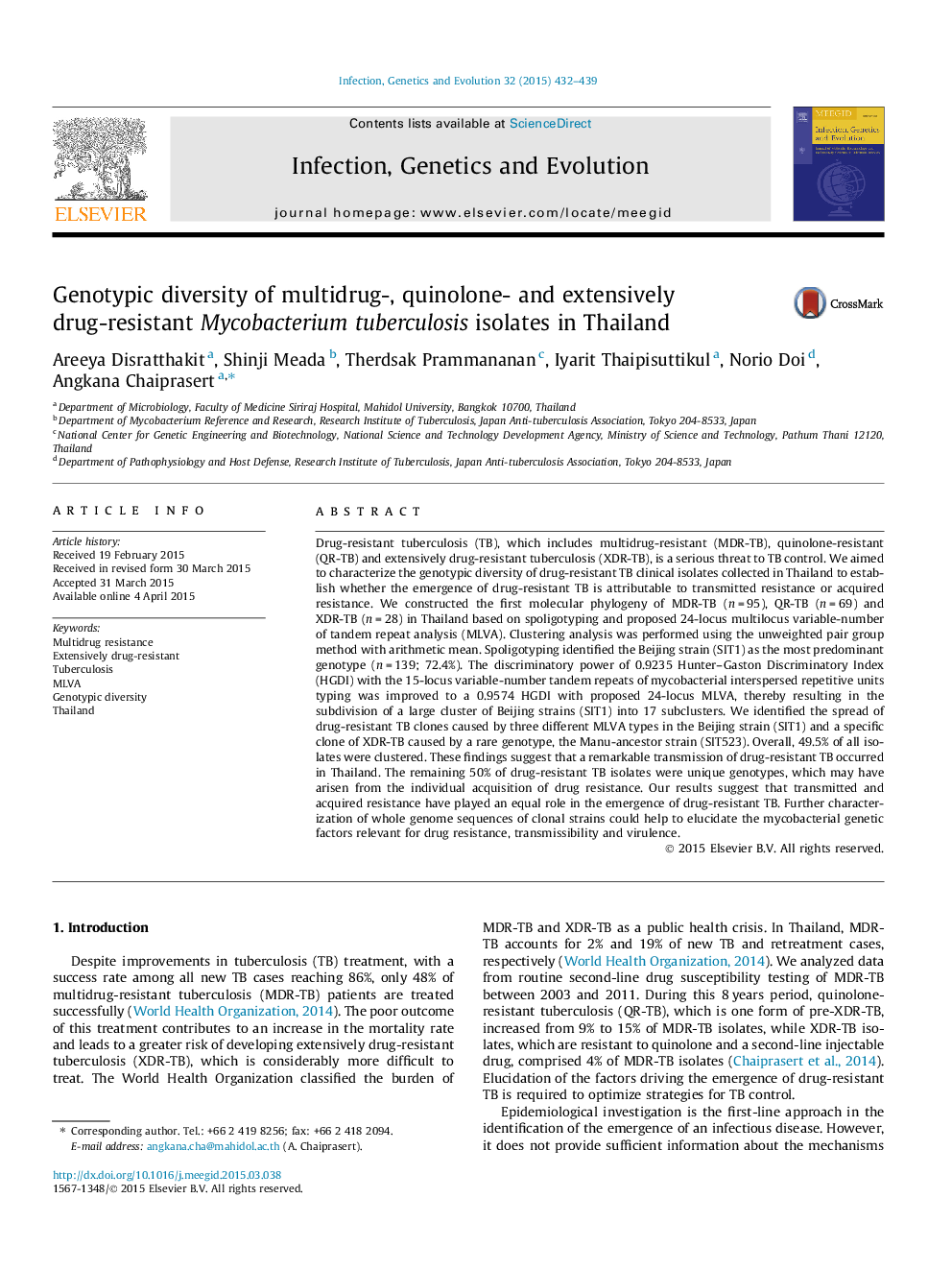| کد مقاله | کد نشریه | سال انتشار | مقاله انگلیسی | نسخه تمام متن |
|---|---|---|---|---|
| 5909238 | 1570171 | 2015 | 8 صفحه PDF | دانلود رایگان |
- Genetic diversity of drug-resistant TB in Thailand was firstly investigated.
- Two instances of MDR-TB and XDR-TB spread were revealed.
- Clonal expansion of MDR-TB involved with predominant clones of Beijing strain.
- Spreading event of XDR-TB involved with a rare genotype, Manu-ancestor (SIT523).
Drug-resistant tuberculosis (TB), which includes multidrug-resistant (MDR-TB), quinolone-resistant (QR-TB) and extensively drug-resistant tuberculosis (XDR-TB), is a serious threat to TB control. We aimed to characterize the genotypic diversity of drug-resistant TB clinical isolates collected in Thailand to establish whether the emergence of drug-resistant TB is attributable to transmitted resistance or acquired resistance. We constructed the first molecular phylogeny of MDR-TB (n = 95), QR-TB (n = 69) and XDR-TB (n = 28) in Thailand based on spoligotyping and proposed 24-locus multilocus variable-number of tandem repeat analysis (MLVA). Clustering analysis was performed using the unweighted pair group method with arithmetic mean. Spoligotyping identified the Beijing strain (SIT1) as the most predominant genotype (n = 139; 72.4%). The discriminatory power of 0.9235 Hunter-Gaston Discriminatory Index (HGDI) with the 15-locus variable-number tandem repeats of mycobacterial interspersed repetitive units typing was improved to a 0.9574 HGDI with proposed 24-locus MLVA, thereby resulting in the subdivision of a large cluster of Beijing strains (SIT1) into 17 subclusters. We identified the spread of drug-resistant TB clones caused by three different MLVA types in the Beijing strain (SIT1) and a specific clone of XDR-TB caused by a rare genotype, the Manu-ancestor strain (SIT523). Overall, 49.5% of all isolates were clustered. These findings suggest that a remarkable transmission of drug-resistant TB occurred in Thailand. The remaining 50% of drug-resistant TB isolates were unique genotypes, which may have arisen from the individual acquisition of drug resistance. Our results suggest that transmitted and acquired resistance have played an equal role in the emergence of drug-resistant TB. Further characterization of whole genome sequences of clonal strains could help to elucidate the mycobacterial genetic factors relevant for drug resistance, transmissibility and virulence.
Journal: Infection, Genetics and Evolution - Volume 32, June 2015, Pages 432-439
